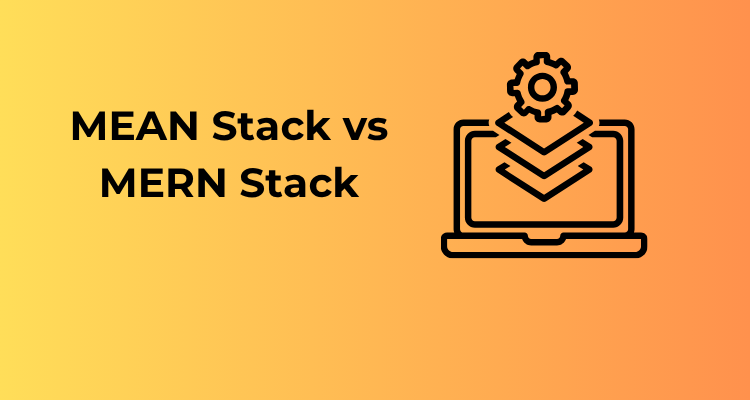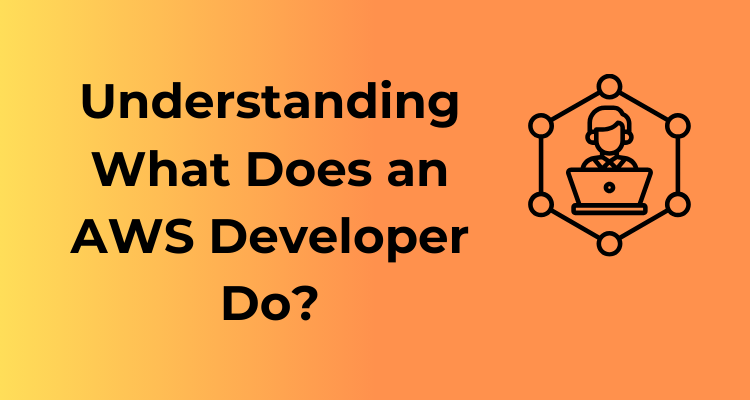Alright, let’s dive into the MEAN stack! If you’ve been wondering about MEAN and why it carries so much weight in the development community, let me introduce you to the four tech players that make up this powerful acronym:
- M stands for MongoDB: A NoSQL database that’s document-oriented. Think of MongoDB as a massive filing cabinet, but instead of your standard office papers, it’s great for storing JSON-like documents in a flexible, schema-less structure.
- E is for Express.js: This is your backend web application framework for Node.js. It simplifies working on the server-side—like chopping veggies for a big meal, it saves you so much time.
- A stands for Angular: The front-end sharp shooter (built by Google), Angular takes care of building dynamic single-page web applications (SPAs). Need reusable components and efficient user interfaces? Angular has got you covered!
- N stands for Node.js: The runtime environment ensuring that JavaScript isn’t constrained to the front-end. Node allows you to write server-side code and makes JavaScript an all-rounder language.
When this squad works together, they form the MEAN stack, a full-stack JavaScript solution. This setup ensures that from database operations to front-end user interfaces, the development relies on one language: JavaScript.
Why Developers Love MEAN
Let me paint you a picture. Imagine being a web developer in a world where you have to jump from language to language while working on different parts of an app. Pretty exhausting, right? That’s where the MEAN stack saves the day! By eliminating the hassle of switching, you stay focused and efficient.
Another bonus? MEAN is open-source. That means endless resources, plugins, and tools are at your disposal. Whether you’re starting small or aiming for enterprise-grade applications, MEAN adapts effortlessly.
Is MEAN All About Simplicity?
It’s worth noting that dealing with Angular might have a learning curve if you’re new to it. Angular is packed with features, which, while amazing, could feel overwhelming for beginners. But if you love organization and thrive on structure, Angular will become your best friend in no time.
Where Does MEAN Stack Truly Shine?
Ever heard of apps needing real-time updates, like dashboards or collaborative tools? MEAN’s architecture is heaven-sent for these scenarios thanks to the efficiency of Node.js and MongoDB’s ability to handle large volumes of unstructured data gracefully. Need flexibility, high performance, and scalability? MEAN’s got you!
MERN Stack Breakdown: What Makes It So Popular?
So, let’s dive into the world of the MERN stack and explore why it has gained such widespread popularity. MERN—the acronym for MongoDB, Express.js, React, and Node.js—is essentially a full-stack framework for building modern web applications. But what makes it such a favorite among developers? Let’s break it down component by component and see why MERN could very well continue to shine in 2025.

1. Why MongoDB Rocks in MERN
MongoDB serves as the backbone of the MERN stack when it comes to database needs. It’s a NoSQL database that stores data in a flexible, JSON-like format, making it compatibility heaven for JavaScript-based applications. You can handle large amounts of unstructured data with ease, perfect for apps requiring dynamic data storage like social media platforms or real-time analytics dashboards.
Here’s a key reason for its popularity: it’s schema-less. Developers love the freedom to change data structures on the fly, without having to do heavy duty database alterations. Plus, MongoDB scales beautifully with growing volumes of data—perfect for future-proofing in 2025.
2. Express.js: The Middleware You’ll Appreciate
Express.js is like the unsung hero of the MERN stack. While it might not get as much attention as React, it quietly does the heavy lifting when structuring your application. This minimalist yet robust web framework simplifies routing, server setup, and API building, making backend development a breeze.
If you’ve ever felt overwhelmed by the complexity of server-side coding, you’ll appreciate how Express.js streamlines tasks, so you can focus on delivering value in your app. It’s no wonder developers turn to it for building scalable RESTful APIs.
3. React: The Crown Jewel
If MERN had a poster child, it would undoubtedly be React. This front-end JavaScript library has earned its place as a favorite among developers for building eye-catching, dynamic user interfaces. React provides a component-based architecture, empowering developers to create reusable, isolated modules of code.
The icing on the cake? React’s virtual DOM dramatically speeds up rendering, improving app performance. Whether it’s an e-commerce site, a single-page application, or even mobile apps via React Native, this library is a joy to work with. If sleek, responsive interfaces are critical to your project’s success in 2025, React makes the case for MERN strong.
4. Node.js: The Powerhouse Behind It All
Node.js brings the server-side power to the MERN stack. With Node, you can use JavaScript both on the client and server sides—one language to rule them all! Its event-driven, non-blocking architecture is perfect for handling concurrent requests, making it great for web apps with real-time capabilities, like chat applications or collaborative tools.
What’s more, Node.js boasts a massive library of packages via npm (Node Package Manager), which lets developers incorporate ready-made solutions and reduce development time. By 2025, this efficiency will only get more pronounced as the ecosystem continues to grow.
Performance and Scalability: Where Do They Stand?
Ah, performance and scalability—two words that can make or break your tech stack choice. If you’re deciding between MEAN and MERN for a future-proof project in 2025, understanding how these two stacks handle load, speed, and size is key. Let’s dive in!
First, Why Do Performance and Scalability Matter?
Imagine this: your application gets featured on a major platform, and traffic skyrockets overnight. If your tech stack isn’t up to the task, your app could crash or slow down, leaving users frustrated. A scalable and high-performing stack ensures smooth operations, even as your user base grows. These qualities are a must for modern applications in 2025!
How Does the MEAN Stack Perform?
The MEAN stack (MongoDB, Express.js, Angular, and Node.js) shines when it comes to scalability, especially on the backend. Node.js is built to handle asynchronous requests efficiently, making it a solid choice for apps with a high number of concurrent users. MongoDB, a NoSQL database, is another key player. Its flexibility allows for horizontal scaling, which means you can add more servers to manage increasing data loads seamlessly.
However, Angular, the front-end component of the MEAN stack, could feel a bit heavier compared to React (used in MERN). For applications requiring lightning-fast front-end interaction and minimal rendering delays, performance might slightly lag behind MERN.
What About the MERN Stack?
Now, the MERN stack (MongoDB, Express.js, React, and Node.js) has been winning hearts, especially for its optimized front-end side. Thanks to React, which uses a virtual DOM (Document Object Model), the rendering process becomes quicker. This makes it an excellent choice for applications focusing on dynamic user interfaces and real-time interaction.
On the backend, MERN is nearly identical to MEAN—it uses the same combo of MongoDB, Express.js, and Node.js. So, no major differences there. Scalability is still strong, but MERN gives an edge in front-end performance due to React’s efficiency and component-based architecture.
Where Each Stack Stands Out
- MEAN Stack: Robust for large-scale enterprise applications. Ideal when you’re focused on backend-heavy workloads and scaling data handling efficiency.
- MERN Stack: A great choice for apps prioritizing a seamless and fast user experience. Think of e-commerce platforms or social networks with dynamic, interactive frontends.
Expert Advice for 2025
Here’s the deal: both stacks are highly capable in terms of performance and scalability. Your choice boils down to the specific needs of your project. If you foresee a lot of user interactions and need a slick, responsive front end, MERN could be a better fit. On the other hand, if enterprise-level data processing and scalability are your primary concerns, MEAN has got your back.
Remember, the beauty of both stacks lies in their shared backend components, which means transitioning or even blending the two is not impossible in the future. Now, that’s something to keep in mind as tech evolves!
Developer Productivity: Which Stack Simplifies the Workflow?
Let’s be honest: as developers, we’re always on the lookout for tools and frameworks that make our lives easier. When you’re juggling deadlines and debugging code till 2 a.m., developer productivity becomes the hero we didn’t know we needed. So, between MEAN and MERN, which stack is the trusty sidekick that keeps you coding like the wind? Let’s dive in!
1. The Scripting Language Battle: Angular vs. React
One of the most noticeable differences lies in the front-end frameworks. The MEAN stack uses Angular, while MERN is based on React. Here’s the distinction:
- Angular: With its structured, opinionated framework, Angular can simplify decision-making for developers. It provides a comprehensive toolkit out of the box, so there’s no need to hunt for additional libraries. If you thrive in a more pre-defined workflow, Angular could feel like a productivity booster.
- React: React, on the other hand, offers more flexibility. While some may find this liberating, it often requires additional libraries for routing or state management, adding extra time and effort into your workflow. However, the simplicity and reusability of components in React can speed up repetitive tasks, especially in complex applications.
At the end of the day, your productivity might hinge on your personal preference: are you a “structured and streamlined” person (Angular), or do you embrace the freedom to build your own toolkit (React)?
2. MongoDB for Both, but What About Node.js?
Both MEAN and MERN rely on MongoDB, which simplifies database management with its NoSQL approach. Where things get interesting is in the Node.js action. Since Node.js powers the back-end for both stacks, developers get the advantage of coding in JavaScript across the board, making the development process faster and easier to manage. However, the integration of libraries can come into play here as well:
In MEAN, the marriage of Angular with Node.js is seamless, given Angular’s baked-in features for full-stack development. For MERN, React’s decoupled nature can sometimes mean you’ll be exploring more ways to tweak and connect it with Node. Both scenarios offer great opportunities, it’s just a matter of balancing out-of-the-box simplicity versus custom-fit flexibility.
3. CLI Tools and Development Environments
One area where developer productivity really shines is in the usage of CLI (Command Line Interface) tools. MEAN developers often have access to Angular CLI, which automates repetitive tasks, like scaffolding components or modules. It’s a lifesaver when you’re working on tight deadlines.
React doesn’t come with a standard CLI in the same way. Instead, developers usually rely on Create React App or similar tools to set up their environment. While CRA simplifies initial setup, you may still find gaps where additional tools or configurations are required.
4. Speed of Debugging and Maintenance
Let’s talk about something every developer cares about: debugging. Angular’s opinionated structure can make debugging more uniform, which can save you time. It’s great for teams where not every member may be a seasoned dev. React, while lightweight and fast, often leaves debugging heavily reliant on external tools like React Developer Tools.
Community and Support: Who Has the Bigger Backup?
Alright, if you’re trying to choose between the MEAN Stack and the MERN Stack, let’s talk about something that can be a dealbreaker for many developers — community and support. We all know that no matter how skilled or experienced you are, you’ll eventually hit a wall where you need guidance, whether it’s from documentation, forums, or someone who’s been there before. So, which stack has the stronger community power behind it in 2025? Let’s explore this together!
Popularity Breeds Resources
Both stacks have massive communities, but their differences are rooted in their popularity over time. The MEAN Stack, for instance, has been around a bit longer, with Angular as its front-end framework. This means there’s already a healthy pile of tutorials, Stack Overflow threads, GitHub projects, and other resources around MEAN. If you’re a fan of having tried-and-tested solutions within a massive ecosystem, MEAN is not a bad pick.
However, the MERN Stack, with its React-powered front end, enjoys undeniable star power. React has become a fan-favorite thanks to its flexibility, massive adoption, and ability to build stellar user experiences. Because of this, the MERN Stack enjoys an energetic, fast-growing base of developers constantly pushing the envelope when it comes to resources and contributions. In 2025, MERN’s community contributions are only expected to grow.
How Thriving Is Open Source Support?
Let’s talk open source for a moment. Both stacks heavily rely on open-source tools. Angular, MongoDB, Express.js, and Node.js form the MEAN Stack’s core framework, while MERN substitutes Angular with React. Since React is developed and maintained by Facebook/Meta, it attracts an army of enthusiasts constantly sprouting new libraries, plugins, and templates.
Even though Angular is backed by Google and has solid engineering behind it, some developers feel it’s a bit less flexible than React. Consequently, this perception might nudge open-source contributors to favor MERN.
Forums, Groups, and Bootcamps
- MEAN Stack: Being older, there’s no shortage of MEAN-specific communities. Platforms like Reddit and Slack have dedicated groups for MEAN Stack discussions, debugging, and tips. However, as trends shift in favor of React, some MEAN groups may feel less active than MERN communities.
- MERN Stack: MERN’s meteoric rise means it’s the “new cool” in many communities. If you join a coding-focused Discord server or forum today, chances are the majority of conversations are MERN-related. Like to learn by doing? Many coding bootcamps now prioritize MERN as a teaching framework due to React’s career relevance.
Documentation Accessibility
Let’s be real — killer documentation can save you countless hours of frustration. Angular (MEAN’s front end) comes with a mountain of documentation that’s super thorough. But, it’s a bit dense, and some beginners feel overwhelmed. React, meanwhile, takes pride in simplicity and clarity in its guides, making it more approachable for developers of all levels. This same philosophy extends to the MERN Stack.
Real-World Use Cases: Where MEAN and MERN Shine
Alright, let’s talk about the practical side of things! If you’re trying to determine whether to go with the MEAN stack or its friendly rival, the MERN stack, a good place to start is by examining where each of them excels in real-world applications. After all, it’s not just about the tech specs – it’s about how they perform in actual projects. Ready? Let’s dive in.
When MEAN Stack Performs Like a Pro
The MEAN stack – made up of MongoDB, Express.js, Angular, and Node.js – is like the Swiss army knife of web development. It’s versatile and robust, making it an excellent choice for building enterprise-grade applications or large, complex web systems. Here are some areas where MEAN truly shines:
- Enterprise Dashboards: Need a heavy-duty dashboard for managing your organization’s operations or logistics? The structured architecture of Angular makes the MEAN stack a prime pick for cranking out dynamic, responsive dashboards.
- Content Management Systems (CMS): If you’re envisioning an expansive CMS, MEAN’s streamlined development process and Angular’s two-way data binding are a golden combination for handling lots of data in real time.
- E-commerce Applications: MEAN loves scalability, and that makes it perfect for e-commerce platforms that might need to handle sudden spikes in traffic (think Cyber Monday sales!).
- Real-Time Apps: MEAN pairs especially well with chat apps, collaborative tools, or anything requiring real-time updates thanks to Node.js’ non-blocking, event-driven nature.
Where MERN Stack Steals the Show
Now, let’s give some love to the MERN stack, which swaps Angular out for React. This switch brings flexibility, speed, and an even more developer-friendly experience. MERN excels in scenarios where user interfaces are front and center. Here’s where MERN truly steps into the spotlight:
- Single-Page Applications (SPAs): React’s component-based architecture makes it ideal for creating seamless, interactive SPAs, where the page never needs to reload to give users a smooth experience.
- Social Media Platforms: MERN is a strong contender for apps that require dynamic user interfaces, like social networking sites. React’s virtual DOM ensures that even the smallest updates happen ultra-fast.
- Data-Driven Dashboards: For apps pulling in tons of data and visualizing it in bite-sized pieces, MERN’s React setup can help craft fast and beautiful user interfaces.
- Mobile-Friendly Apps: Need a web app that feels native on mobile devices? MERN’s React can help because of its fantastic integration with mobile frameworks like React Native.
Learning Curve and Skill Set Requirements for 2025
If you’re a developer looking to future-proof your career, you might be wondering which stack between MEAN and MERN will be easier to learn or more valuable in 2025. You’re in the right place! Let’s break it down and make sense of the learning curve and skill sets required for each stack so you can make an informed decision on where to invest your time and energy.
Breaking Down the Learning Curve
Learning any new technology requires effort, but MEAN and MERN have several overlapping technologies that make them approachable for most web developers. Here’s what sets them apart:
- Shared Technologies: Both stacks use JavaScript as their backbone. Since JavaScript is a must-know for modern developers, starting with either stack will build on skills you’re likely already familiar with. Both stacks also involve Node.js for the server-side, which means some of the learning effort transfers seamlessly.
- MEAN Stack: Here’s where it gets interesting. In the MEAN stack, Angular is the front-end framework. Angular has a steeper learning curve compared to React (used in MERN) because of its complexity and structure. It’s highly opinionated, which can make it harder for beginners, but once mastered, it offers powerful out-of-the-box solutions.
- MERN Stack: The MERN stack’s React library might feel simpler to get started with if you’re a beginner. React’s modular and component-based architecture can seem more intuitive. Plus, React has an ecosystem that offers tons of learning resources for developers at all levels.
Skill Set Requirements: What You’ll Need to Succeed in 2025
As the tech landscape continues to evolve, it’s important to focus on key skills that will keep you competitive. Here’s what each stack prioritizes:
- JavaScript Mastery: Because JavaScript is at the heart of both stacks, polishing your knowledge of the language and its modern ES6+ features is non-negotiable. Focus on writing clean, efficient code for better career prospects.
- Framework Proficiency: For MEAN, allocate time to mastering Angular, particularly if enterprise-scale apps are your target. For MERN, get extremely comfortable with React, and consider exploring advanced concepts like hooks, state management (Redux), and server-side rendering (Next.js) for an edge.
- Backend Fundamentals: Both stacks utilize Express.js and Node.js on the server-side. Understanding middleware, RESTful APIs, and asynchronous programming will go a long way in tackling real-world challenges.
- Database Skills: Both stacks rely on MongoDB. You’ll need to grasp schemas, queries, and aggregation pipelines well, as modern web apps heavily depend on efficient data handling.
- DevOps Knowledge (Optional): In 2025, deploying and maintaining applications will play a crucial role. Experiment with cloud services like AWS, familiarity with containers like Docker, and CI/CD pipelines to stay ahead of the competition.
What Should You Choose?
Your choice should boil down to your interests and goals. If you foresee yourself working more on enterprise applications, Angular’s deeper adoption in large organizations might make MEAN your primary pick. However, for startup culture, rapid prototyping, and React’s growing ecosystem, MERN could give you a more dynamic edge. Think about the type of projects you want to work on and the kind of companies you want to be part of—it will guide your decision.









